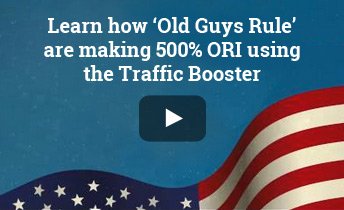How and Why Should I Raise My Google CTRs
So what are Google CTRs anyway, and why should we as eCommerce entrepreneurs care?
A Google CTR, or click-through-rate, refers to the rate at which online shoppers click through from your organic or paid links to your website pages. In this post we look at why they’re important and how you can raise them.
So Why Care About CTRs?
Since Google first became Google, there has been a LOT of debate on whether Google CTR impacts SEO ranking. Experts debating whether Google takes into consideration the rate at which people click through to their store from SERPs (or search engine results pages), when determining page quality and relevance. With page quality and relevance in turn determining where you rank on a search page, it is definitely something every eCommerce store owner should be worrying about.
Last year, Moz set out to answer the question once and for all. Their data found that on average, if you beat expected CTRs, your online store site is much more likely to rank more prominently on the search pages that matter. And should it fall below the expected CTRs, your pages will drop to lower SERP positions.
The bottom line: Whichever side of the debate Google experts are on, it’s clear that getting high Google CTRs lets Google know that people are finding your website fabulous and relevant. If you’re thinking: well, I already have awesome SERP positions, don’t forget that high rankings don’t guarantee searchers will actually click to visit to your site. So regardless of whether it affects SEO or not, clicks mean traffic and traffic means sales.

And isn’t it sales conversions we want?
Next... Here’s how you can raise your Google CTRs:
Revamp Your Meta Description
As you know, when using Google search to land on a page of links, each listing comes with a description. Those couple of sentences beneath the clickable title that describe what the content/page is about – that’s the meta description and it’s something that highly influences whether users will click through or not.
The meta description of your online store is the first port of call when looking at improving and raising your Google CTRs. This description tells potential shoppers exactly what they can expect when clicking through to the page - whether it’s your home page, a blog post or a product page.

Here are some tips on how you can improve meta descriptions to ultimately raise your Google CTRs.
Limit Them to 160 Characters
Although you can technically make your meta descriptions as long as you like, if you want the full description to be seen, keep them between 150 -160 characters. Google only allows a certain amount of pixel space for description on their search page and following this guideline will ensure that your descriptions are not cut.
Include Your Focus Keyword
Now, we are not advocating for the stuffing of keywords. We are firm believers in writing for the reader and keeping keyword practices “white hat.” However, including your focus keyword of the page content will help ensure that the keywords the user is using in their search match the page content that you’re offering.

Keep Them Clear
Raising your Google CTRs at the expense of your bounce rate is a BIG no-no! Bounce and engagement rates work hand-in-hand with CTRs. If you’re tempted to use deceiving descriptions to get those CTRs up, you have to consider that this could result in the user jumping straight off your site because they haven’t found what they’re looking for. Disappointed clickers mean loss of potential shoppers as well as worse SEO rankings. To ensure this doesn’t happen keep your meta descriptions clear, straightforward and on point. In other words, what you see is what you get.
Add a CTA
Your meta description, in essence, turns your website search listing into an online ad, which is why including a CTA (call to action) or offer in the description can really help your Google CTRs. One of our merchants is on point and is a good example of eCommerce stores doing just that.

Improve Your Engagement Metrics
As mentioned above, CTRs form part of the engagement metrics that prove to Google that your website is relevant and awesome to web searchers. Engagement metrics refer to things like your bounce rate, how much time they are spending on the page from when they clicked through and whether they click through to other pages. If potential shoppers are clicking through to your site from search and are then engaging with your content in that way, you’ll get big Google bonus points.
First, let’s look at engagement metrics and then discuss some tips on how you can improve them.
Time on Site
The longer the web user, after clicking from search results, stays on your site, the more Google will deduct that the page the user is viewing is a quality page.
Bounce Rate
Bounce rate refers to the percentage of people who leave after only viewing one page. The more people who leave your site altogether after viewing the page, the more Google algorithms will assume that your page doesn’t offer value. You can improve your bounce rate by improving the responsiveness of your site, offering better CTAs, improving navigation, improving product images and ensuring your content is relevant to what the user was searching for. Here’s an estimated chart of average bounce rates by industry:
 Image Source: Neil Patel
Image Source: Neil Patel
Page Views
Page views is another important engagement rating. While working to reduce your bounce rate, work on improving the number of average page views. Industry standards dictate that an online searcher spends on average of 2.5 pages per site, and therefore if your page views are under this average you’re sacrificing engagement rankings.
Dwell Time
Dwell time is defined as the amount of time that passes from the time an online searcher lands on your page to when they click back to search results. If potential shoppers click through to your pages and then quickly click back to continue their search on a regular basis, this is a big sign to Google that the page content is not relevant to that user's search.
Improve Engagement Metrics by Including ‘Bucket Brigades’
‘Bucket Brigades’ is an old copywriting trick where you use words and phrases designed to keep people on your page - ultimately making page content interesting, to keep readers interested and engaged. SEO expert Brian Dean suggests that you start with enticing intro ‘bucket bridge’ copy, and then add some more throughout your post. Here are some of his suggestions you can use:
- Here’s the deal:
- Now:
- What’s the bottom line?
- You might be wondering:
- This is crazy:
- It gets better/worse:
- But here’s the kicker:
- Want to know the best part?
Improve Engagement Metrics by Making Page Content Visually Appealing
Make sure your overall site and all its pages are as visually appealing as possible. The truth is, first impressions matter and people will judge the quality of your content (before reading a thing) by how it looks. This includes the quality of your images, how the text is broken up, overall aesthetics of your website, how you’ve placed headlines, whether it’s simple to navigate and whether it’s easy to read. Here are some things you can do to make your online store more visually appealing to improve your engagement metrics:
- Add videos to your page
- Put most relevant information and CTA’s above the fold
- Don’t be afraid of white space and keep it simple
- Use good quality product images
Our merchant Wilcox Boots is on the money with their page content design.

Check and Improve Your Low Organic Quality Scores
The next thing to do is to check which of your store’s pages have CTRs that are below average and then optimize them accordingly. You can get this data from your Google Analytics dashboard.

For a full breakdown on how to read these reports, head over to google’s webmaster tools.
Increase CTRs With the Help of Facebook
Lastly, it’s time to re-look at your Facebook ads and social branding efforts. Establishing your brand through social media ads allows you to reach more people. The more people who get to know you, the more likely they will view you as a trustworthy source. So next time they are searching and come across your link, they will be twice as likely to click through.
Another handy way to get your name out there (and to drive great traffic) is to use Facebook groups. Check out our guide on getting free traffic from facebook groups to get you started.
--
We hope this guide helps you get those CTRs, and ultimately your conversions, up. If you’re looking for more tips, tricks, guides and advice follow our blog.
Some other topics you might found helpful:
ppc vs. seo - which provides better value?
What Do I Need to Know About Google Ads?
Your Complete Guide to Google Shopping
Does Google Ads Work?

